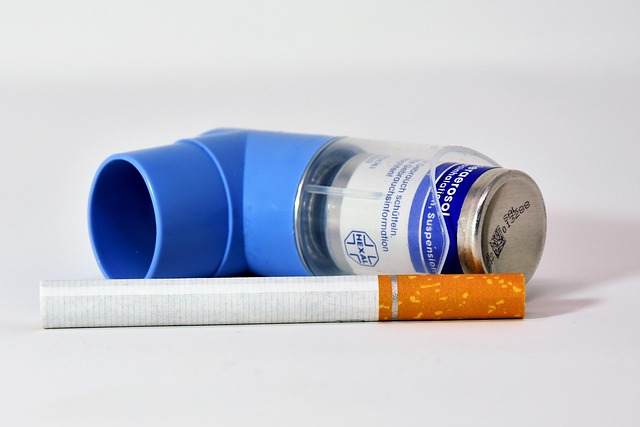Quit Smoking: A Comprehensive Guide to Breaking the Habit
Anti-smoking products like nicotine patches, lozenges, and prescription medications can support your journey to quit. Many are designed to ease withdrawal symptoms and reduce cravings, making it easier to break the habit and improve long-term health.

What are the health benefits of quitting smoking?
The health benefits of quitting smoking are numerous and begin almost immediately after your last cigarette. Within just 20 minutes of quitting, your heart rate and blood pressure start to drop. After 12 hours, the carbon monoxide level in your blood returns to normal. Over the following weeks and months, your circulation improves, lung function increases, and your risk of heart disease begins to decrease.
Long-term benefits of quitting smoking include a reduced risk of various cancers, particularly lung cancer, as well as a lower likelihood of developing chronic obstructive pulmonary disease (COPD) and other respiratory illnesses. Quitting smoking also improves your overall physical appearance, including healthier skin, teeth, and nails.
How can I prepare myself to quit smoking?
Preparing to quit smoking is a crucial step in ensuring a successful attempt. Start by setting a specific quit date, preferably within the next two weeks. This gives you time to mentally prepare and gather the necessary resources. Inform your friends and family about your decision to quit, as their support can be invaluable during the process.
Consider your smoking triggers and develop strategies to avoid or cope with them. For example, if you typically smoke after meals, plan alternative activities like taking a short walk or practicing deep breathing exercises. Gradually reduce the number of cigarettes you smoke each day leading up to your quit date, and remove all smoking-related items from your home and workplace.
What anti-smoking products can help me quit?
Anti-smoking products can be valuable tools in your journey to quit smoking. Nicotine replacement therapy (NRT) products, such as patches, gum, and lozenges, are designed to help manage cravings and withdrawal symptoms by providing controlled doses of nicotine without the harmful chemicals found in cigarette smoke.
Prescription medications like varenicline (Chantix) and bupropion (Zyban) can also be effective in reducing cravings and withdrawal symptoms. These medications work by targeting the brain’s nicotine receptors, making smoking less satisfying and easier to quit.
What strategies can I use to overcome cravings?
Overcoming cravings is one of the most challenging aspects of quitting smoking. One effective strategy is the 4 D’s: Delay, Deep breathe, Drink water, and Distract. When a craving hits, delay acting on it for at least 5-10 minutes. During this time, practice deep breathing exercises to relax and reduce stress. Drink water to help flush out toxins and keep your mouth busy. Finally, distract yourself with an activity you enjoy, such as reading, listening to music, or going for a walk.
Another helpful technique is to identify and avoid trigger situations that may tempt you to smoke. If certain people, places, or activities are strongly associated with smoking, try to avoid them or develop new coping mechanisms to handle these situations without cigarettes.
How can I stay motivated during the quitting process?
Staying motivated throughout the quitting process is crucial for long-term success. Keep a list of your reasons for quitting and refer to it when you feel tempted to smoke. Track your progress and celebrate milestones, such as one week, one month, or one year smoke-free. Consider using a smartphone app that provides daily motivation and tracks the health benefits you’ve gained since quitting.
Joining a support group or finding a quit buddy can also help maintain motivation. Sharing your experiences with others who are going through the same process can provide valuable encouragement and accountability. Additionally, consider rewarding yourself with the money you’ve saved from not buying cigarettes, using it for a special treat or saving towards a larger goal.
What are some popular anti-smoking products and their costs?
Anti-smoking products can be valuable aids in your journey to quit smoking. Here’s a comparison of some popular options:
| Product | Provider | Cost Estimation |
|---|---|---|
| Nicotine Patches | Various brands (e.g., NicoDerm CQ, Habitrol) | $30-$50 for a two-week supply |
| Nicotine Gum | Various brands (e.g., Nicorette, Nicotrol) | $40-$60 for a two-week supply |
| Nicotine Lozenges | Various brands (e.g., Nicorette, Commit) | $35-$55 for a two-week supply |
| Varenicline (Chantix) | Prescription medication | $300-$500 for a one-month supply |
| Bupropion (Zyban) | Prescription medication | $100-$200 for a one-month supply |
Prices, rates, or cost estimates mentioned in this article are based on the latest available information but may change over time. Independent research is advised before making financial decisions.
It’s important to note that while these products may have upfront costs, they are generally less expensive than continuing to smoke over time. Many health insurance plans cover smoking cessation products and programs, so check with your provider for potential cost savings.
Quitting smoking is a challenging but achievable goal that can dramatically improve your health and quality of life. By utilizing a combination of anti-smoking products, effective coping strategies, and a strong support system, you can successfully break free from tobacco addiction. Remember that quitting is a process, and it may take several attempts before achieving long-term success. Stay committed to your goal, be patient with yourself, and celebrate each smoke-free day as a victory on your journey to a healthier life.
This article is for informational purposes only and should not be considered medical advice. Please consult a qualified healthcare professional for personalized guidance and treatment.




